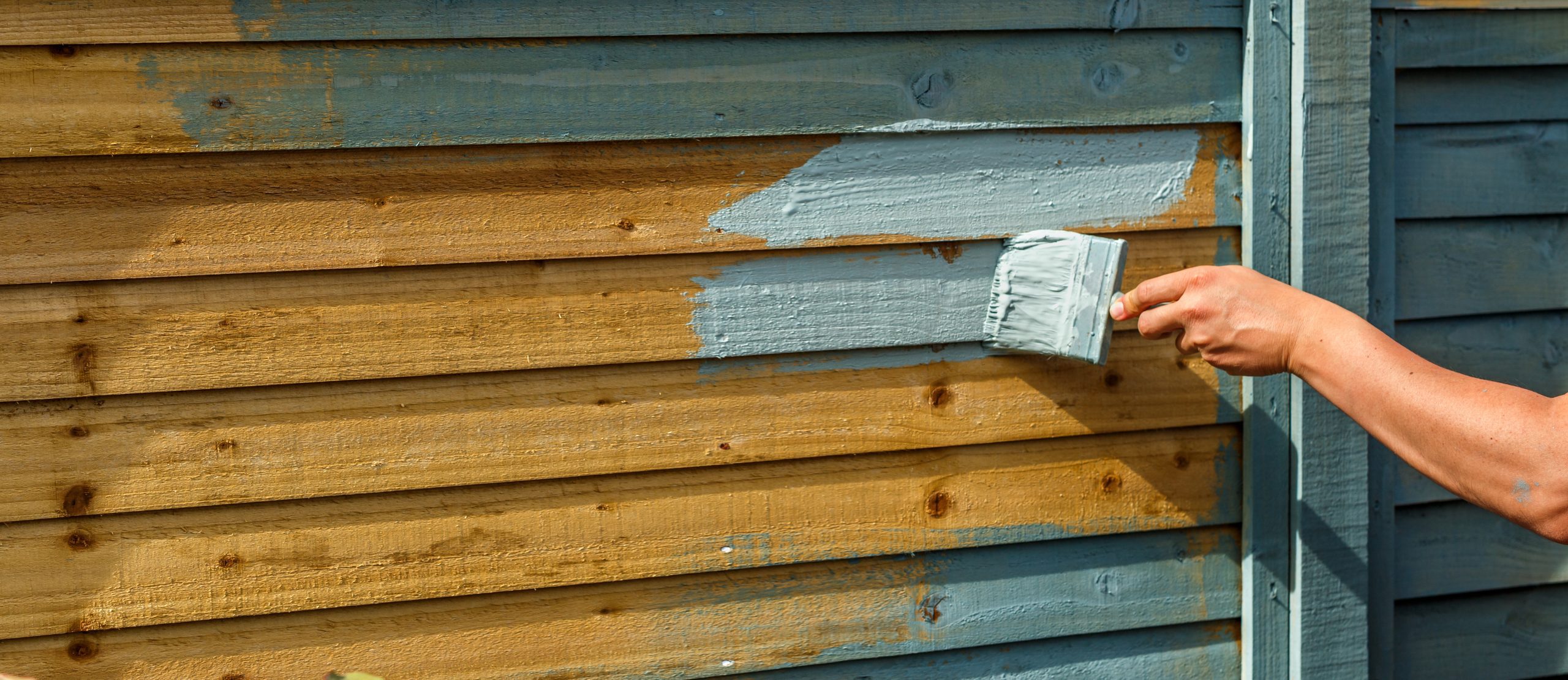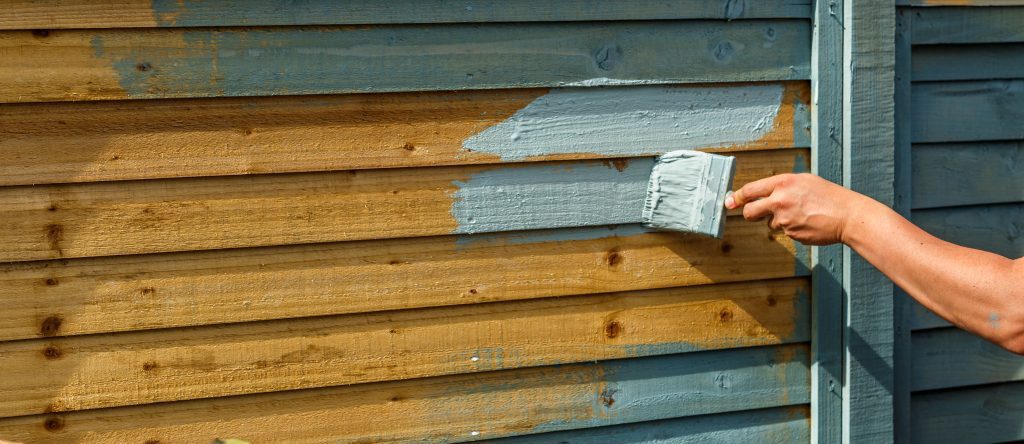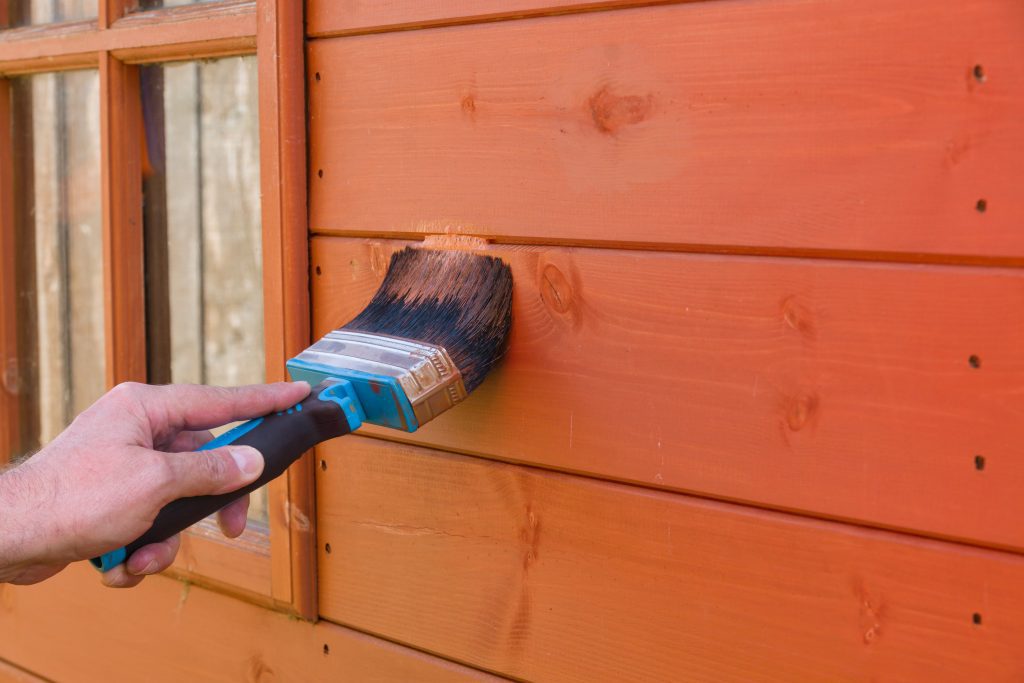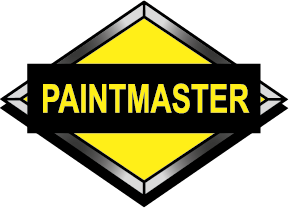
It’s officially summer; now’s the perfect time to spruce up your garden with some exterior wood painting. What better place to start than with your fences or shed?
There’s no denying that, after a few years of harsh weather, exterior wooden surfaces start to look tired. If you use the right type of paint, you can make them look great for up to a decade!
Choosing the right paint is crucial to maximise the look and longevity of your woodwork. Thankfully Paintmaster have all you need, and we’ll explain what types of paint are best for your next project.
The Best Paint for Wood Surfaces
When it comes to painting wood, you can’t just grab any can of paint and load up a brush. Even the smoothest wooden surface reacts differently to other materials, so you need to choose your paint carefully if you want it to last.
Here are the types of paint to use on wood:
Oil Based Paint
Very durable and long-lasting, oil-based paint is a go-to for many professional painters and craftspeople. It’s naturally water-resistant and results in either a matte or glossy finish.
The thickness of the paint removes the need for a topcoat, meaning less paint is needed overall. However, oil-based paints are famously temperamental, making them not ideal for beginners. You also need a high-quality paint brush that is designed for oil-based paint, or you’ll get an uneven finish.
Finally, oil-based paint only works if you’re painting onto bare wood or a layer of primer. If you’re repainting, check what the surface was painted with last before you commit.
Latex Paint
Much easier to work with than oil-based paint, latex paint is a good choice for beginners. It lacks durability compared to oil-based, so will need a new coat sooner, but a couple of layers should be enough for 4-5 years.
You may also see visible brush strokes in the finished product, even with multiple layers, so if you want a faultless finish latex shouldn’t be your first choice.
Latex paint comes in a wide variety of finishes including satin, matte, gloss, and semi-gloss.
Water Based Paint
The easiest paint to work with, water-based paints are perfect for beginners. Unless the wood surface was painted with oil-based paint previously, there is no need to pre-treat the surface before you start. This saves a large amount of prep time.
Water-based paints have low odour and dry quickly. This makes them ideal for larger projects as you won’t have to plan around the weather as much.
Acrylic Craft Paint
As with all painting projects, acrylic paint is always a solid option. For small projects that require a lot of bright colours, acrylic has the widest range of colours and shades available. If you are using multiple colours, acrylic also dries quickly, making it the best paint for wooden craft projects.

Choosing the Best Paint for Wood Projects
All of these paints will work for your exterior wood painting, but the results will vary. Let’s take a look at the wood painting products currently available from Paintmaster:
Acrylic Satinwood
Available as part of our colour system, our acrylic satinwood is perfect for anyone with a specific colour in mind. We can mix any colour code, both RAL and British Standard. For more information, check out our colour system blog from earlier this year.
Oil Based Satinwood
One of our most popular paints, this blend is ideal for both interior and exterior painting and works on wood, metal, and concrete. Oil based satinwood creates a mid-range shine finish, meaning it doesn’t reflect too much light or look dull when the sun goes down.
Oil Based Woodstain
A durable timber stain that lasts a long time, even when exposed to harsh weather, our oil based woodstain is one of our toughest blends. Best used for fences, gates, and rough-sawn surfaces. Can also be used inside.
Water Based Woodstain
Faster drying than the oil-based alternatives and safe for plants and animals. Water based woodstain works well on fences and gates, but the finish won’t last as long as oil based.
Shed and Fence Paint
Finally, our custom shed and fence paint is water based and designed to protect sheds and fences as well as just make them look good. It is available in a range of colours that allow the natural texture of the wood to show through. These colours vary from classic browns to bolder reds and greens.
Get the Most out of Wood Paint
There are a few ways to maximise the longevity of wooden surfaces when they’re painted.
Firstly, as with all painting projects, using a quality primer before applying paint is crucial. Rough wood absorbs water more than stone and other surfaces, which leads to mildew and rot. 2-3 coats of primer will fill in these gaps, allowing water to run off the wood, protecting it from even the heaviest rain.
Primer also makes the painted layers look bolder, as it gives the paint a better surface to cling too. This means your painted fences, sheds and other wood will look great for years to come.
Paintmaster also stock proven Cuprinol wood treatments. These are water based and repel and remove insects from the surfaces. This can be applied before and after the new paint and affects any stage of infection.

Is it Better to Paint or Varnish Wood?
So far, we’ve only talked about paint, but it isn’t the only way to freshen up a fence, gate or shed.
Varnish is an alternative to painting, although it pales in comparison to quality paint. The pigments in all wood paints protect the surface from UV rays, and the thicker layers add much more durability.
It is estimated that a varnished wood surface can only survive 1-2 years of direct sunlight before a new coat is needed. In comparison most paints last between 7-10 years. Varnish may seem like a cheaper option, but when you consider you’ll need to re-varnish up to 5 times before paint would fade, it is more expensive overall.
The UK’s Most Trusted Paint Supplier
Whatever paint you choose for your next wood painting project, Paintmaster has the perfect product for you. Everything we offer, from paints and primers to brushes and rollers is affordable and high-quality.
If you have any questions about our products or want to learn more about interior and exterior painting, either get in touch or check out our blog for more information.
We look forward to hearing from you.
FAQ's
Do I need to prime wood before painting?
By applying a layer of primer to wood before painting, you create a better surface for the paint to cling to. This adds longevity and makes your chosen colour and sheen stand out more.
Do you need an undercoat when painting wood?
If the wood surface you are painting is glossy, your new paint won’t cling to it very well. You should sand the surface thoroughly, then add a layer of primer. This will create a perfectly smooth surface for your paint.
Do you need wood paint to paint wood?
A lot of paints work on wood surfaces, but wood paint (fence paint) is designed to cling to the surface better than other interior paint. Inferior paints won’t last as long and will often have a streaky finish that quickly flakes away.
How do you prepare wood before painting?
If the wood is in good condition, a thorough clean is all you need before you start applying paint and primer. However, if the wood is worse for wear, with damage or roughness, you should sand it down first.
Is oil or water-based paint better for wood?
Both of these paints offer great colour and finishes. However, water-based paints are easier to work with, making them more beginner-friendly. Oil based paint is often glossier, so if you prefer more sheen, they might be best for you.
What type of paint is best for wood?
There are a range of paints that work well on wood. These include oil-based paint, water-based, acrylic, and latex paint. These all have their pros and cons, so it’s important to find out which is best for your wood painting project.
